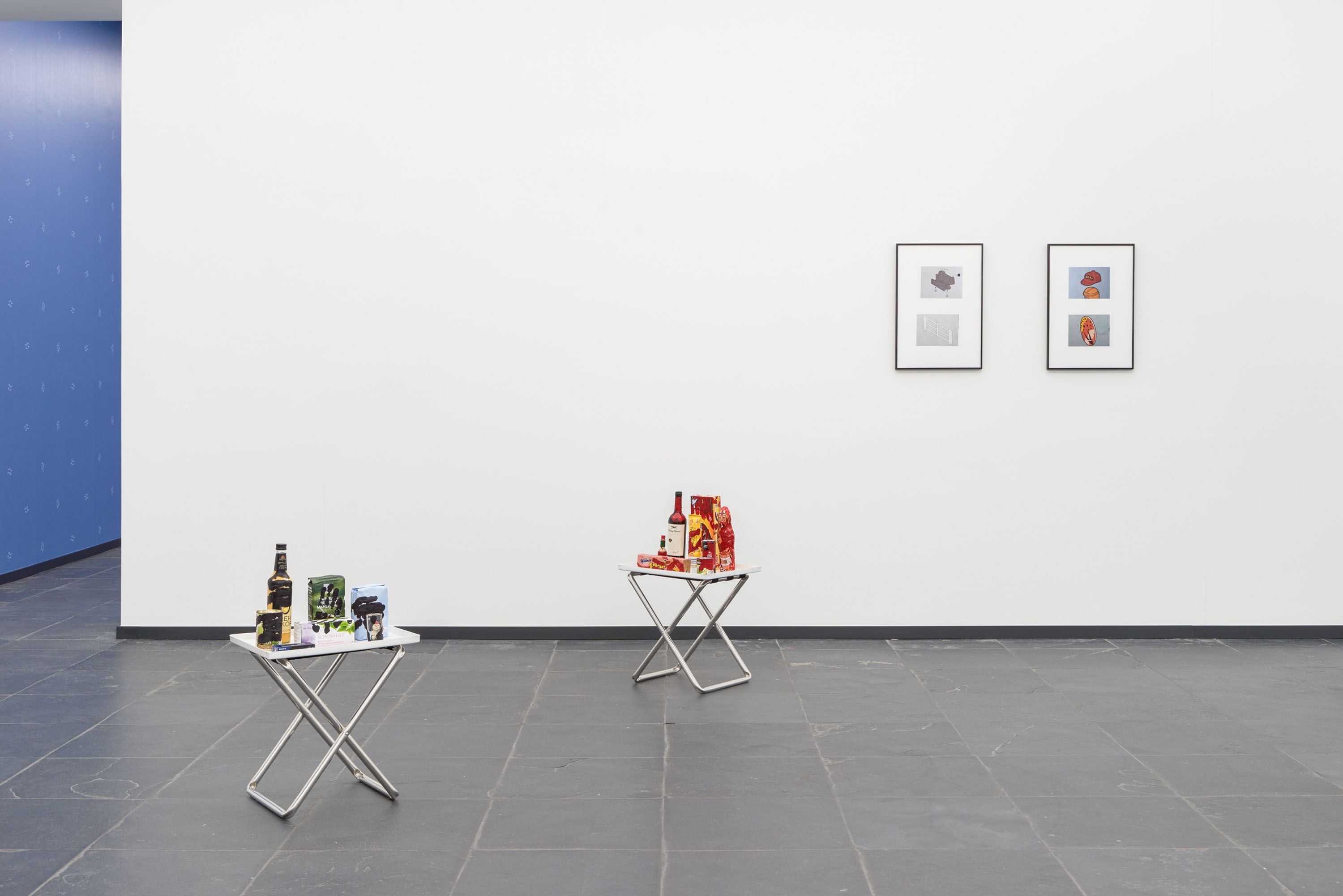
Since 1953, the Kulturkreis der deutschen Wirtschaft im BDI e.V. (the Association of Arts and Culture of the German Economy Federation of German Industries) has been awarding the annual ARS VIVA prize to young artists living in Germany whose works are distinguished by their progressive nature. Following an initial exhibition at the Kunstverein in Munich, the three winners are showing their work here in a newly established exhibition. In this way, the museum presents a focused view of the international young art scene.
The winners of the ARS VIVA prize in 2017/18 are Anna-Sophie Berger (1989) from Austria and Oscar Enberg (1988) and Zac Langdon-Pole (1988) from New Zealand. Although their art and the focus of their research are very different, each of the three artists raises exploratory questions about the social, historical and economic aspects of objects and their surroundings. Each visualizes and combines contemporary conventions concerning production, distribution and valuation. In this exhibition, various artistic strategies also intersect, such as hybridization, recontextualization and semantic analysis.
In Ghent, the three artists concentrate among other things on the specific spatial setting of S.M.A.K. In a sensitive and well-considered manner they embed their individual works and the exhibition as a whole in the museum building and its urban environment. For example, there is the project by Zac Langdon-Pole in association with a florist’s shop near the museum; Oscar Enberg incorporates into his show a drawing by Thierry De Cordier from the S.M.A.K. collection; and Anna-Sophie Berger approaches the Citadel Park as the counter-image to the museum’s indoor space. In addition, the use of biographical material and ordinary objects – such as furniture (Langdon-Pole) and business documents (Berger) from their own family, and the colonial history of his place region of origin (Enberg) – contributes to the quite domestic character of this exhibition.
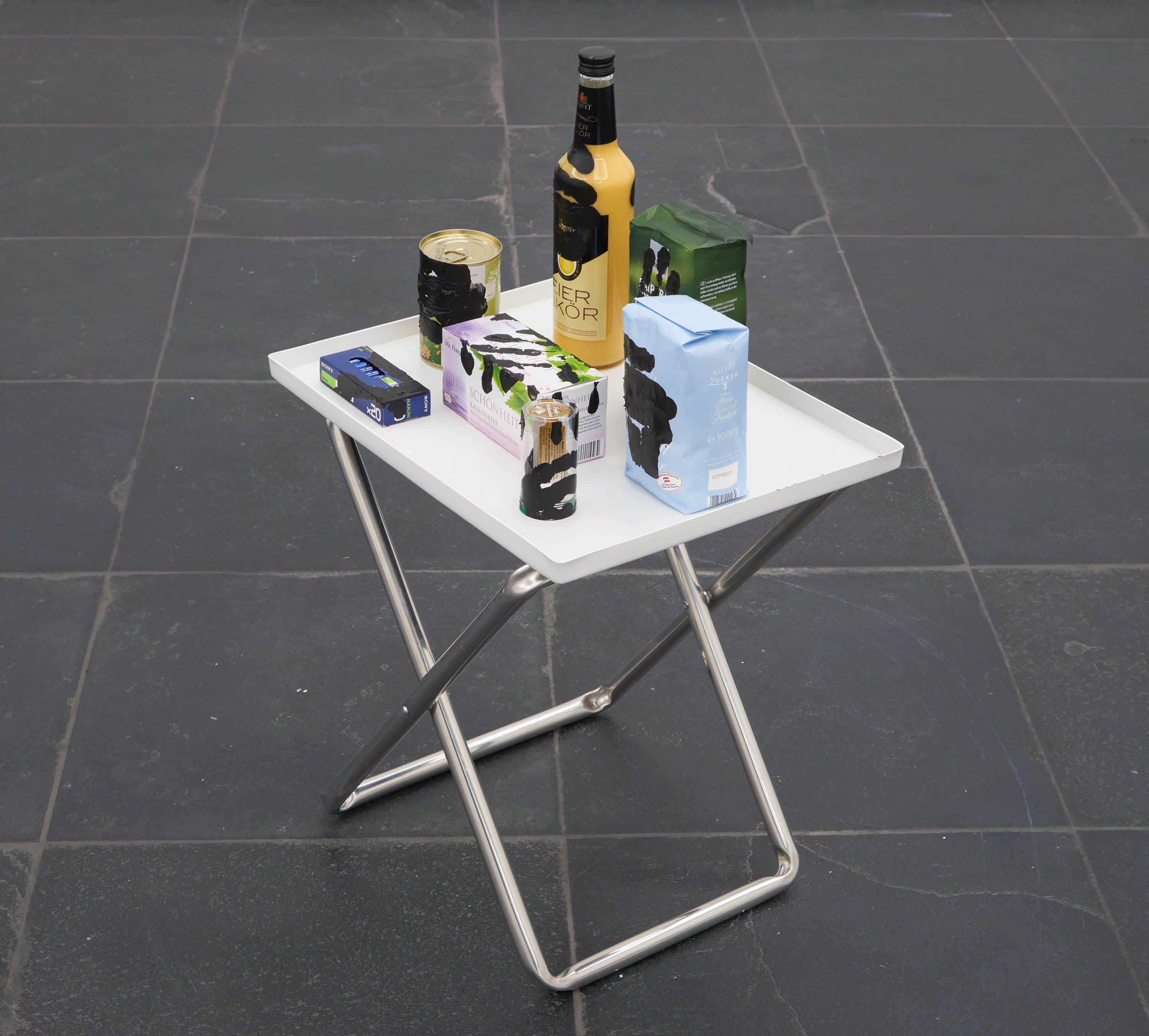
acrylic paint on egg liquor, canned lentils, fair trade ground coffee, herbal tea, marzipan figurine, sugar, pvc, aluminum and polyester
14 x 18 x 27.5 in
36 x 46 x 70 cm
The title of these ‘bouquets’ of foodstuffs plays on the idea of the consumer’s responsibility. Berger sees these works as portraits of the buyer in a broad, sociological sense and as documentation of the specific design of products from her home country, Austria. The finger and hand prints stand for the joint responsibility borne by the consumer of these products. For Berger this is more about a gauging of the capacity to act than about an idea of anti-consumption, which is a significant nuance in the European context and the sometimes heated debates between the European Union and its member states.
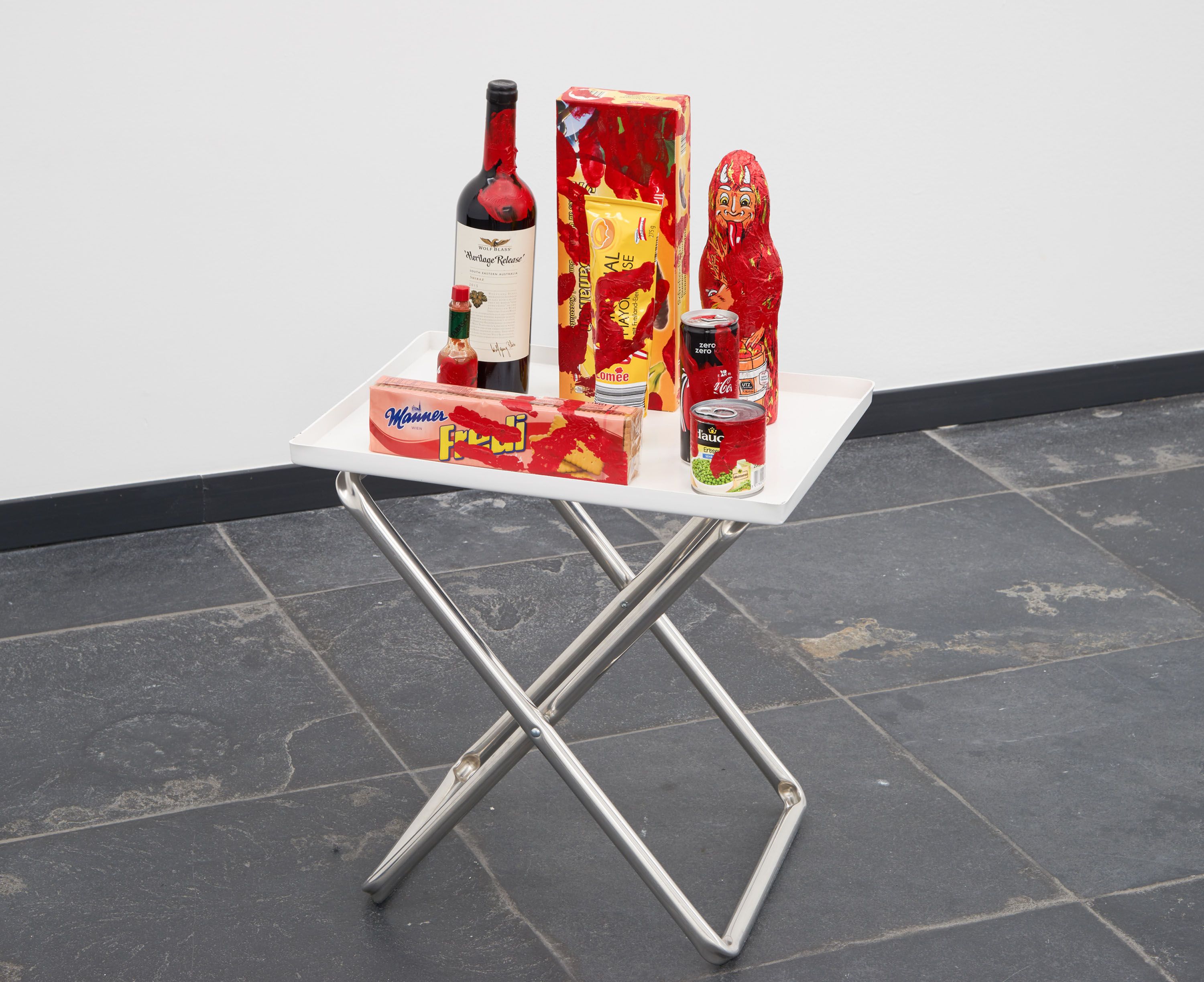
acrylic paint on 'Heritage Release' red wine bottle, chocolate bananas, mayonnaise, chocolate Kampus, Coca-Cola Zero, Manner Fredi Biskuits, Tabasco, pvc, aluminum and polyester
14 x 18 x 27.5 in
36 x 46 x 70 cm

both laserprint on paper
23 x 16 in (each)
59 x 42 cm (each)
The popular German toy manufacturer Playmobil has offered miniature versions of real world and historical phenomena to children for generations. With these plastic figures, children can create their own little worlds and stage human and non-human interactions. Berger shows a pair of images from the illustrated Playmobil building instructions. In both, a god-like human hand looms over artificial settings, which are marked by the inventory numbers of their respective components. Arrows indicate the order in which these realistic abstractions of the natural world can be faithfully created.
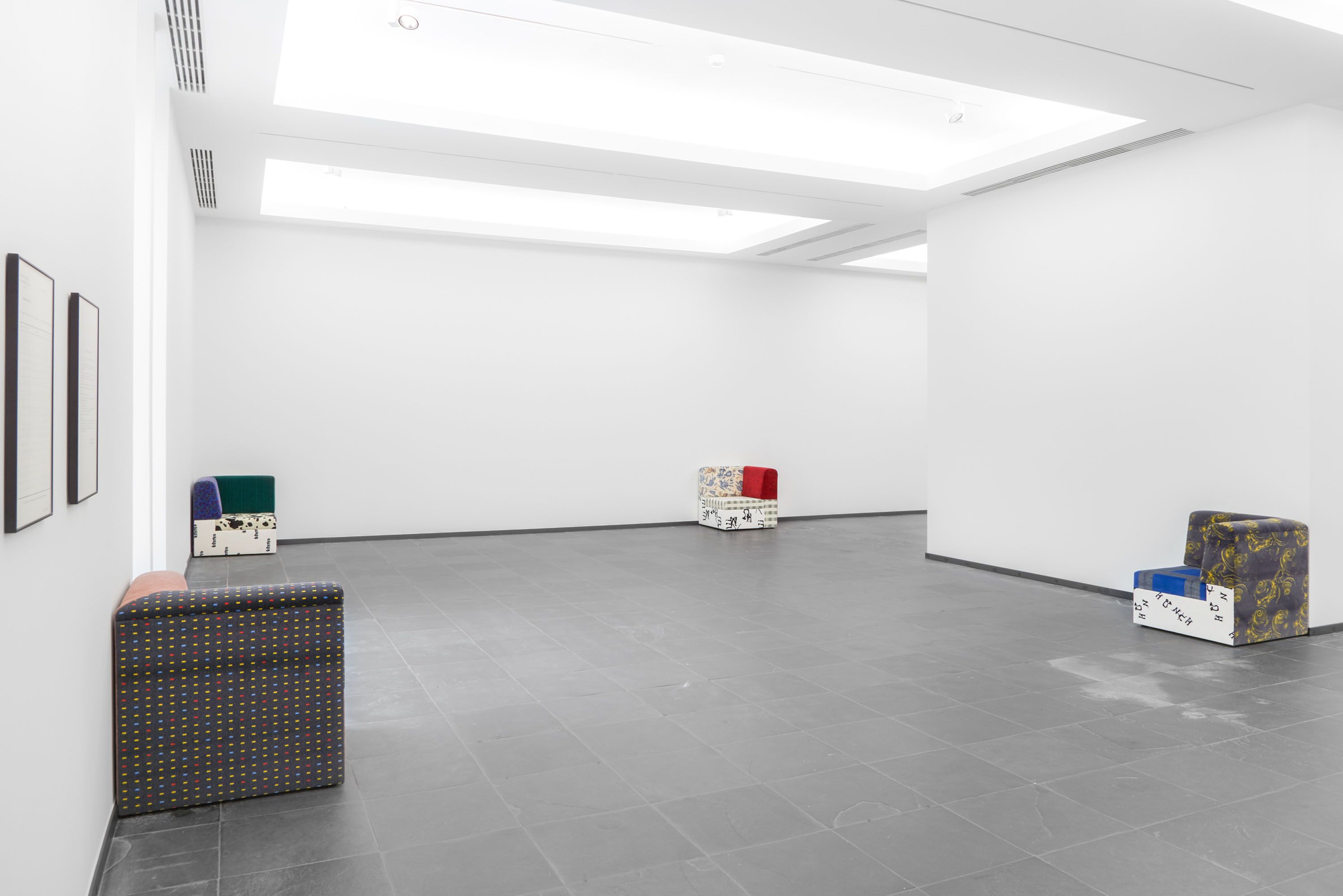
print on cotton velvet, polyester fleece, wood, and metal
4 pieces, each 31.5 x 31.5 x 31.5 in
4 pieces, each 80 x 80 x 80 cm
Four sofas are arranged in the four corners of this room. In this way each corner automatically refers to the other three. If you put them together, they would form a square. In this work, Berger suggests the movement involved in putting them together. The shape of the sofas was inspired by those of old-fashioned seating modules. The artist, who among other things studied fashion design, bought the fabrics they are covered with in a sale. Some of their patterns are more reminiscent of car seats than household furniture. The white fabrics with words printed on them in black are based on an alphabet that Berger designed. On each sofa one can read a word that is just about to fall apart: exhume, hunch, tethered and cumbersome.
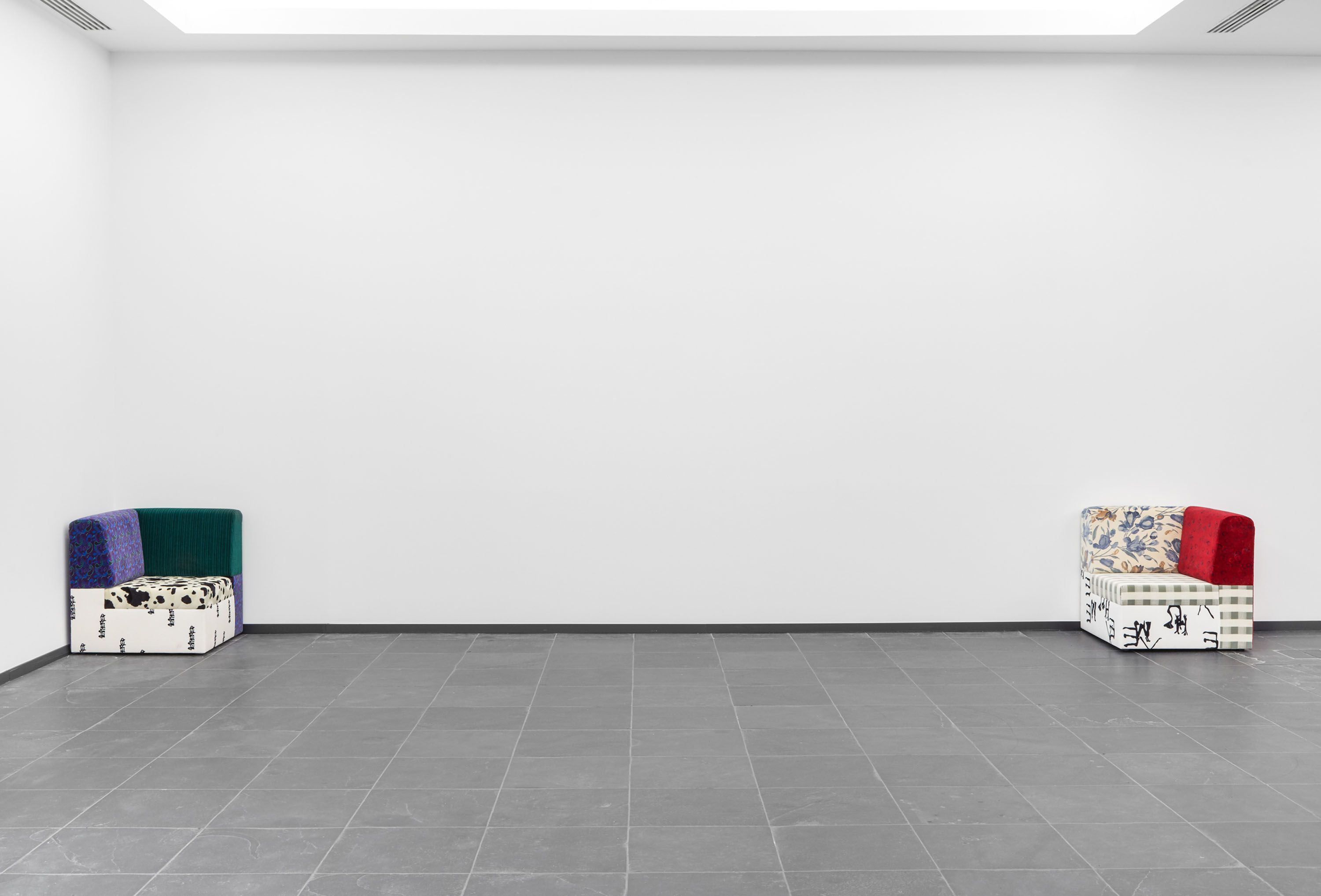
print on cotton velvet, polyester fleece, wood, and metal
4 pieces, each 31.5 x 31.5 x 31.5 in
4 pieces, each 80 x 80 x 80 cm

print on cotton velvet, polyester fleece, wood, and metal
4 pieces, each 31.5 x 31.5 x 31.5 in
4 pieces, each 80 x 80 x 80 cm
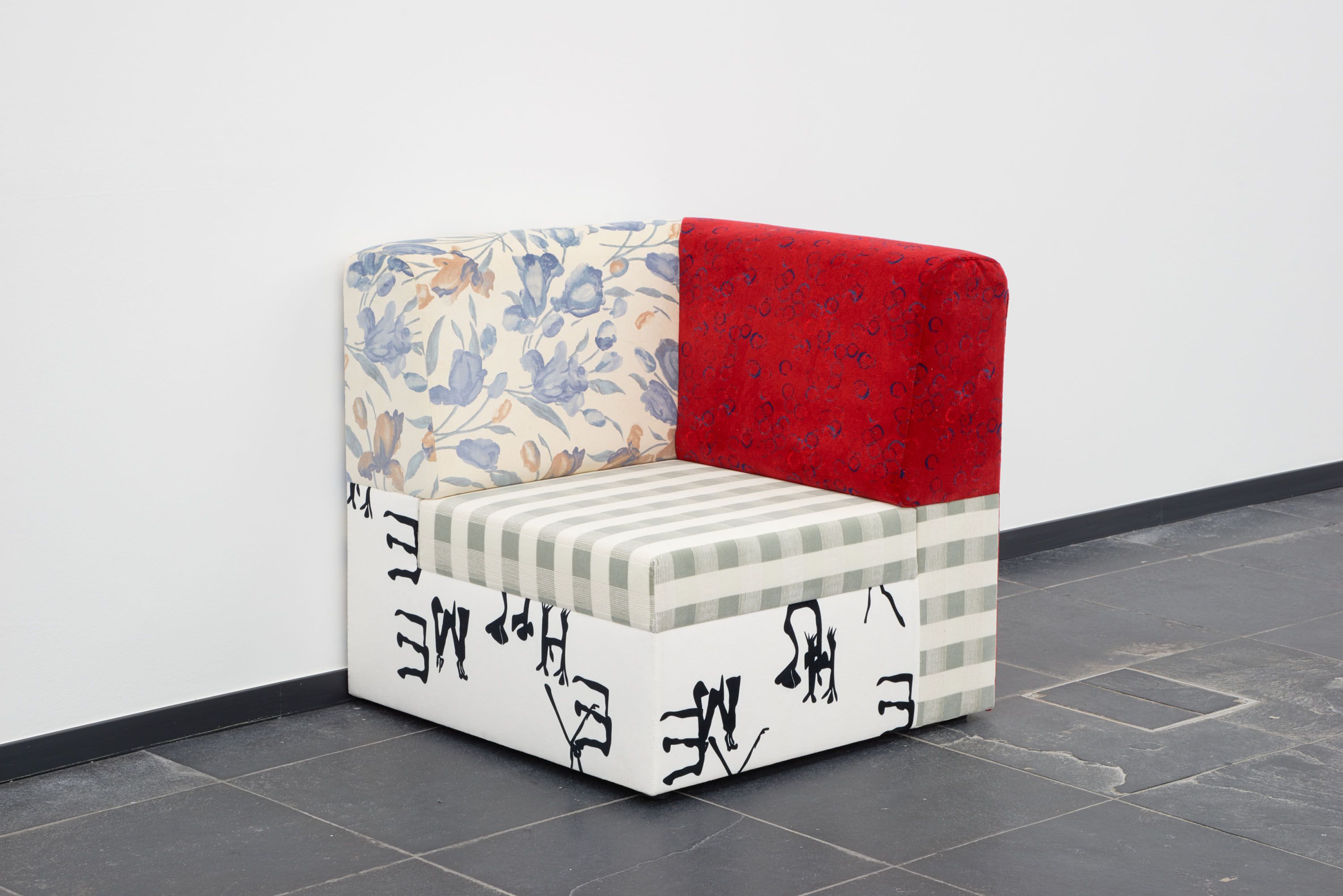
print on cotton velvet, polyester fleece, wood, and metal
4 pieces, each 31.5 x 31.5 x 31.5 in
4 pieces, each 80 x 80 x 80 cm
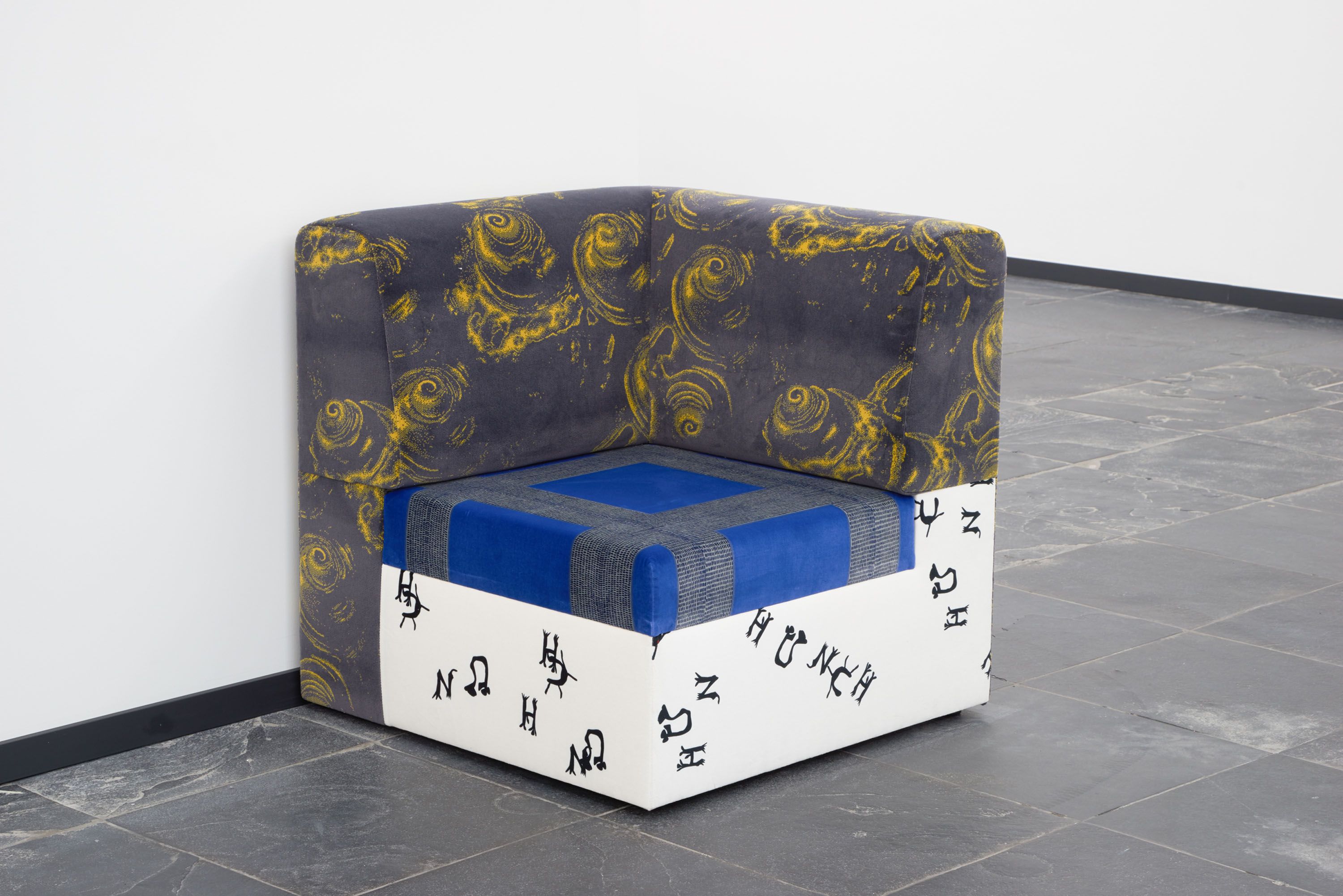
print on cotton velvet, polyester fleece, wood, and metal
4 pieces, each 31.5 x 31.5 x 31.5 in
4 pieces, each 80 x 80 x 80 cm

print on cotton velvet, polyester fleece, wood, and metal
4 pieces, each 31.5 x 31.5 x 31.5 in
4 pieces, each 80 x 80 x 80 cm

both inkjet on paper
23 x 16.5 in (each)
59 x 42 cm (each)
These are reproductions of items from the archives of a factory making fashion accessories that was run by Berger’s family for three generations until it finally had to close down in 2005. In post-industrial Western Europe, this sort of family company became superfluous after the expansion of the European Union to the east, partly because of the possibility of cheaper production in low-wage countries. Berger does not see these blown-up scans of the original documents only as something nostalgic, but also as a metaphor for the distribution of goods. The order form and the accompanying conditions of sale are an analogue counterpart to the online sale conditions that we accept with a single digital click. Details such as three-figure telephone numbers and original letterheads reinforce the historical character of the work. By showing this work in Ghent, not far from Brussels, Berger embeds her family history in European economic history.